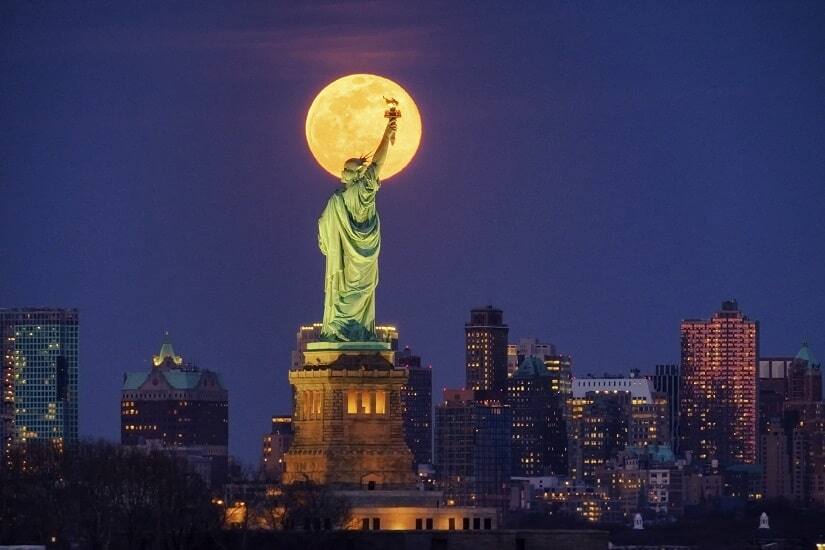‘Curious Fashion’ is a monthly column by feminist researcher, writer and activist Manjima Bhattacharjya. Read more from the series here . *** New York has been on my mind since it became an epicentre of the COVID-19 pandemic. People wrote about how the city had gone quiet, deflated into a shell of itself, everyone’s lives now lonely Ed Hopper paintings. Through social media, we saw thousands of New Yorkers numbed or slayed by the virus, self-quarantined in tiny apartments eating canned peaches and drinking water to survive the days, weeks, months of illness. On 15 April 2020, New York City had 1,11,424 cases of coronavirus and 10,899 deaths, steadily recording the highest number of daily deaths than any other city. Oh New York, New York. A city so incredible you say its name twice like a prayer. In my mind, New York is synonymous with fashion. It’s where I’ve bought atrocious clothes I’ve never actually worn, as if I become suddenly emboldened the minute I cross the Lincoln tunnel to come in view of the Manhattan skyline. When you’re in New York you feel fashionable. Ghosts of fashion icons past whisper to you, pushing you to be a more glamorous version of yourself, as if you’re part of a vintage photograph that’ll someday be on someone’s wall. (Only this can explain an NYC purchase of a postbox-red top with faux fur around the wrists and neck, as if I was auditioning for a role in Cabaret off-Broadway.) [caption id=“attachment_8281751” align=“alignnone” width=“825”]  All those songs, movies, essays, those paeans to New York are not without reason. AP Photo[/caption] New York always reminds me too, of the roots of “fashion” — the hard nails, nitty gritty business of it. When I’m there on work trips, I stay in mid-town Manhattan — or what used to be called the Garment District or the Fashion District. From being a den of vice in the 1800s, it became the heart of the country’s garment industry by the 1900s, an area inhabited by Jewish immigrants from East Europe put to work in garment factories through various circumstances. Like the invention of the sewing machine that enabled mass production of garments at double the speed of hand-sewn garments and met at the other end by increased demand for mass-produced clothing across the country. It became a formal self-contained district when a fight with the Fifth Avenue Association led the latter to demand zoning laws from the city council. Fifth Avenue had all the fancy retail stores, but its residents didn’t want immigrant workers in the vicinity. Ironic, given that these immigrants were the ones making the very clothes they sold. But the retailers wanted to keep their upper-class consumers away from their working-class producers, and so launched a campaign that demanded the workers stay within a marked zone. The city council complied, which essentially “quarantined” garment workers into this bounded zone which became the Garment District. Men who’d fared well in the garment industry and other residents became invested in developing this district into an architectural spectacle through which they could stake a claim as true citizens of New York. Many of New York’s iconic buildings and architectural forms came up in the Garment District. The trademark New York “loft”, for instance, the form the garment factory took with more light and air after tenement factories were banned because of health hazards (smallpox had apparently spread through clothes made in these tenements that were cramped, filthy and unhygienic). By the 1970s the fall of the district was imminent as manufacturing moved away, newer immigrants like the Asians and Hispanics occupied these areas and mob-controlled violence became rampant. Today it is a mixed-use district, with offices of different kinds but still visibly a centre of wholesale garment trade. Shops in rows have notices outside the door, New-York style, warning people that they won’t sell you the odd button or pyjamas or feathers or yardage so don’t come in to ask. Occasionally the impact of manufacturing having moved elsewhere shows up with window signs saying CLOSING SHOP. EVERYTHING MUST GO. Sometimes I stand for a moment on these streets and think: this is where it all started. It was in these buildings, these former garment factories where the seeds of New York’s important role in fashion were sown. But it was also here that the struggle for women’s rights started, with most of the workers in these factories being women. The history of 8 March or what we celebrate as International Women’s Day has its roots here. The story goes that on 8 March 1857 women workers in the garment and textile factories in the area rose up in protest of low wages and abysmal working conditions. Police violently dispersed the protest but it laid the seeds of a labour movement. These women went on to form a labour union around the same time a few years later. In November 1909 came the New York shirtwaist (meaning blouses) workers’ strike, also called the Uprising of the 20,000. After a call for action (in Yiddish — unusual because male trade unionists spoke English) by trade unionist Clara Lemlich, 15,000 women workers walked out of their factories and onto the streets of New York in angry protest. The strike ended four months later, after they successfully negotiated with factory owners for higher wages, shorter hours and equal treatment to women who were part of the labour union and those who weren’t. A year later, in March 1911, tragedy struck. A massive fire in the Triangle Shirtwaist Factory killed 146 women workers, most of whom were Jewish and Italian immigrants between 13 to 23 years of age. The factory’s supervisors had locked the factory doors from the outside to prevent workers from leaving early. That’s why workers could not escape when the fire caught, leaving the young women to burn or jump out in flames from windows. The catastrophic consequences forced authorities to take up labour legislation seriously. The following years saw more protests held on 8 March by women workers and trade unions around the world — not only for changes in working conditions, but for peace, for the end to war and poverty, and for suffrage and women’s right to vote. New York is not just the epicentre of this pandemic, but central to the histories of both fashion and women’s rights. All those songs, movies, essays, those paeans to New York are not without reason. You either love New York or you hate it, but you can’t not feel something for it. I don’t doubt New York will be back in business, but I’m taking a moment today to hold it in my thoughts and send out a prayer for it. Twice. Manjima is the author of Mannequin: Working Women in India’s Glamour Industry (Zubaan, 2018)
Oh New York, New York. A city so incredible you say its name twice like a prayer.
Advertisement
End of Article


)

)
)
)
)
)
)
)
)



